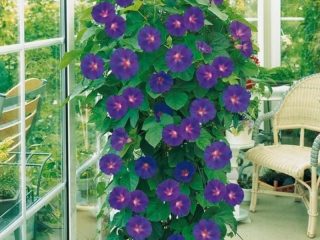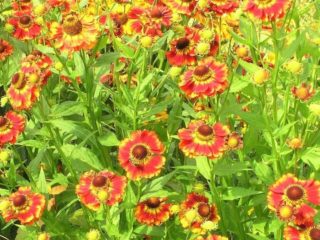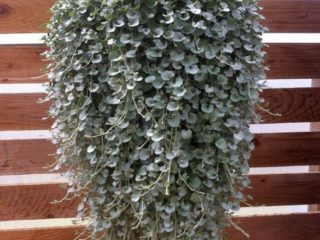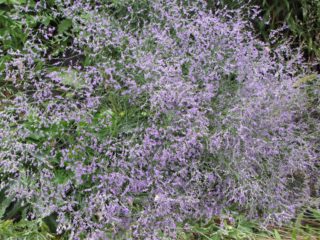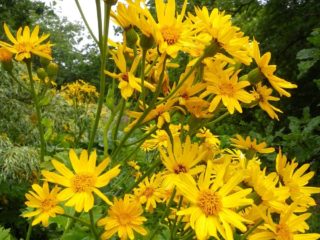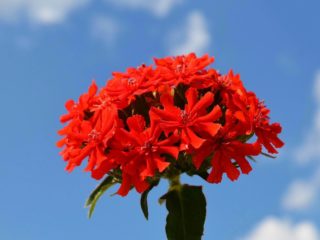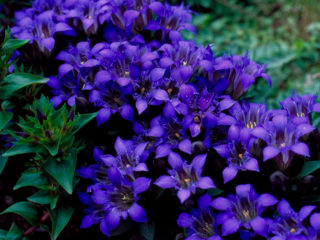Content
Red fescue is an ornamental crop grown as a lawn grass. It spreads like a red carpet, grows well in any soil, and reproduces by self-sowing. Owners value the plant for its unpretentiousness and beauty.
History of the origin of red fescue
The species is common in many countries. It grows naturally in Europe, Asia and the USA. The grass stand has more than 300 varieties. It takes root even in sandy soils, so it is cultivated all over the globe.
Description of red fescue with photo
Red fescue has a similar structure to meadow fescue. The main difference is the color and several factors discussed below.
What does red fescue look like?
The culture can be called compact. The needle-like foliage has a red, green, bluish tint. In June, the plant forms tall panicles.They are located on miniature stems that rise above the hummocks. Thanks to this decoration, the garden area gains some airiness.

In the store you can buy packaging from 1 to 15 g, the number of seeds is usually more than a thousand
A waxy coating can be discerned on the leaf blades. The plant retains its decorative appearance for 9-16 years, depending on external factors.
Attention! In the first year after planting, the grass is sparsely located. However, by the second the foliage completely covers the area. This occurs due to self-seeding.
Red fescue height
As you can see in the photo, the grass height is average. Red fescue can reach from 25 to 80 cm. Thanks to the creeping structure of its roots, it easily spreads over an area.
Application

Red fescue is used for landscaping lawns, parks, gardens, alleys, and sports fields.
It is characterized by average resistance to polluted air, so it is quite suitable for planting in urban areas. The loose rhizome grows with amazing speed, without causing problems with decoration. In addition, the plant requires almost no care.
The leaves are densely arranged and can withstand different climatic conditions. Thanks to its good germination, the plant is valued in all countries. Among the advantages are drought resistance and winter hardiness. Red fescue is suitable for growing in different regions of Russia.
Lawn grass is environmentally friendly. The immune system is adapted to fight fungi, so the latter hardly bothers it. Average density - 130 shoots per 10 square meters. cm. Red grass can be grown on any surface.
In addition to being highly decorative, such a lawn is economical - it requires almost no fertilization, watering, or mowing.The only problem when growing is prolonged flooding, as a result of which the crop may die.

Red fescue has a rhizomatous tillering type, but is suitable for cultivation in any soil
In the first year, fescue is characterized by weak growth. The rate of development increases with age. The lawn looks dense from the second year. Several varieties are popular in Russia. The grass is suitable for growing regardless of the type of lawn; it is unpretentious and unique.
The uses of red fescue vary. The main factor is the subspecies of the plant. Some grass stands are characterized by rapid adaptation, others have short shoots, and others are very dense.
The difference between red fescue and meadow fescue
Red fescue, as its name suggests, has a reddish color. Another difference is the width of the sheet. In the meadow variety, the plates cannot be called compact. Therefore, it is less suitable for landscaping areas.
Types of red fescue
The following varieties are popular in Russia:
- Hairy (Festuca rubra trichophylla) - has small root shoots, but is characterized by a dense aerial part. The grass is suitable for low mowing. It is used to decorate saline soils, which often happens on roadsides and alleys. The plant is not afraid of drought and grows well in the shade. It grows most quickly in mild climates.
The grass is soft and pleasant to the feet
- Red (Festuca rubra) is well adapted to any environment. The plant forms powerful roots that fill the area in a short time.Thanks to this, the grass stand can easily tolerate temperature changes, drought, plenty of light, and shade. Designers use grass in combination with other crops and separately from them.
Looks great in a bright design, suitable for landscaping gazebos
- Hard (Festuca rubra commutata) – leaves grow very densely, roots are completely absent. The plant is winter hardy and suitable for low mowing. To fill gaps in the lawn, botanists recommend using other species along with hard fescue.
The plant tolerates shade and sun well
Advantages and disadvantages of red fescue
Red fescue is an ornamental crop. It is excellent for growing in Russian conditions and easily tolerates winter.

The culture is immune to fungal diseases
Pros:
- shoot density;
- environmental friendliness;
- low cost of planting material;
- unpretentiousness;
- smooth lawn;
- resistance to shading, drought, damage;
- fast recovery.
Minuses:
- requires a haircut;
- does not grow on dense clay massifs;
- does not tolerate excess moisture.
How to sow red fescue
The plant must be sown at a certain period. This will allow it to quickly take root and gain strength.
Landing dates
Annual/perennial red fescue is not recommended to be planted at the end of the summer season. Viable shoots will compete with weak ones, so due to the struggle, the crop will not have time to adapt to winter.
Red fescue seeding rate
In order for the plant to take root safely on the site, the soil is plowed a month before the start of work. At the same time, they get rid of garbage.It is better to remove weeds manually - herbicides can have a bad effect on red fescue. To be on the safe side, you can use fertilizers. Before planting, the soil is loosened and watered.
The sowing rate for red fescue varies. It is more convenient to divide the garden into square meters with a rake to make it easier to calculate seed consumption. For 1 sq. m place 20-30 g of raw materials. When landscaping large areas, it is advisable to use seeders.
After sowing, you do not need to sprinkle the seeds. Repeated watering is a mandatory procedure. The main thing is that the water does not wash away the future grass. A roller, if available, is used for compaction.
When does red fescue emerge?
The germination time of red fescue seeds depends on external factors. Usually it takes 15-20 days. However, the ideal carpet will be obtained in two years, when the shoots have time to grow. Don't worry if there are gaps in the lawn - they will heal themselves.

Adding sand to the soil will help form a drainage system
How to care
In the spring, fallen vegetation is removed, weeded, watered, and garbage removed. The application of fertilizing depends on the age of the red fescue. When staying in one area for a long time, nitrogen fertilizers will be useful. In other cases, no additives are required.
In summer, moderate but regular watering is required. The lawn is cut as it grows, on average, when the grass grows to 5 cm. At the same time, drainage capacity is checked. To improve it, pierce the soil with a pitchfork.
Red fescue propagation
The plant is propagated by seeds and by dividing the bush. Red fescue tends to self-sow. If you do not have time to remove the faded flowers, the seeds themselves will fall out of the ears.
Raw materials can be used for propagating seedlings. In this case, use a container and fill it with nutrient substrate. It is better to purchase seeds in the store. To improve germination, they are treated with potassium permanganate.

The plant should be pruned in dry weather so that the cut areas are not wet and do not provoke the appearance of fungus
Only adult specimens can be propagated by dividing the bush. They must be healthy. The soil is dug up, being careful not to injure the roots. The separated roots are planted in the desired area. It should be moist and fertilized. It will take several months to form a dense carpet.
Conclusion
Red fescue is a plant known throughout the globe. It takes root quickly and does not require special substrate or care. The culture forms beautiful turf in the second year.
Reviews of red fescue
https://www.youtube.com/watch?v=7wq9ACwLWgk



